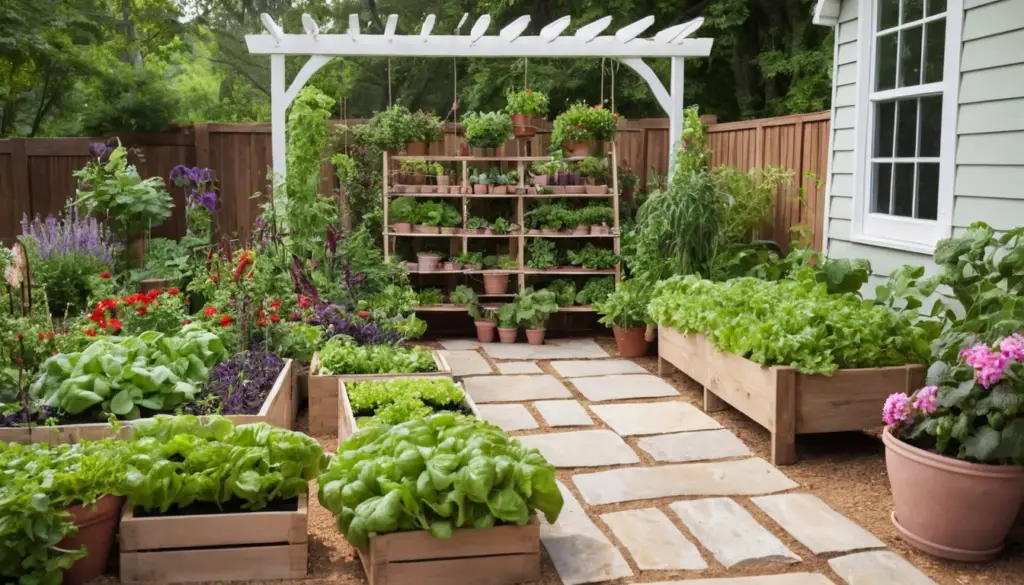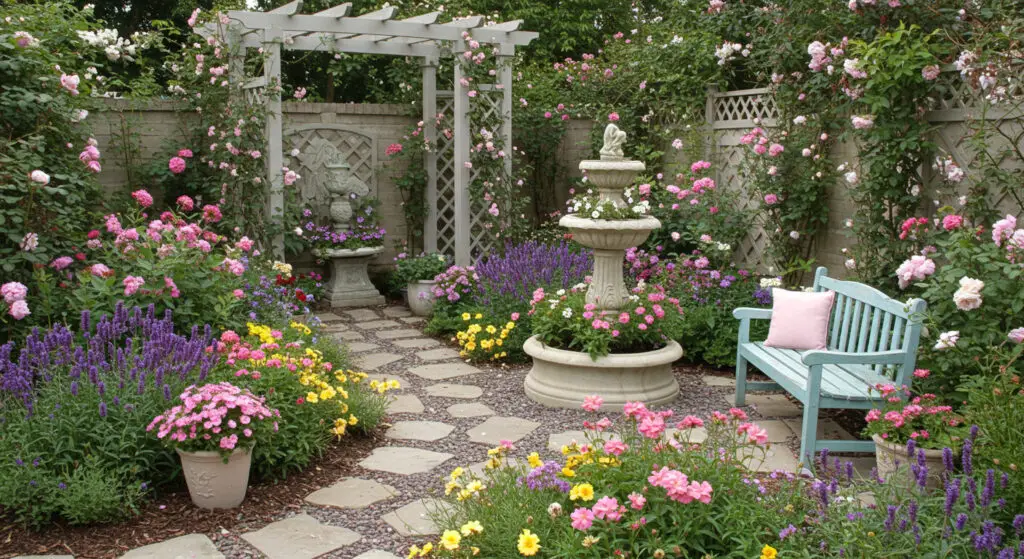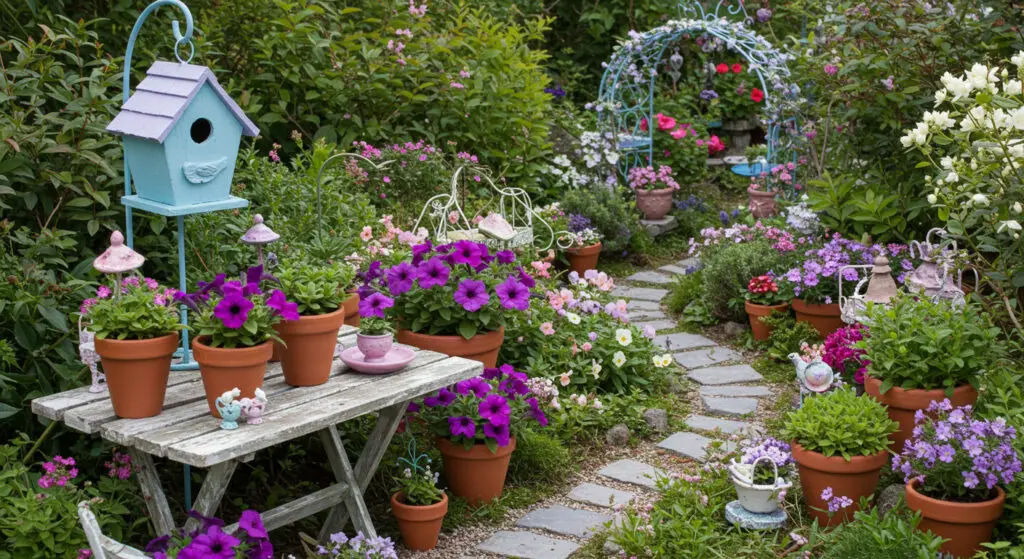A vegetable garden is not just a practical way to grow your own food—it can also be a stunning, rewarding, and enjoyable space. Whether you have a large backyard or a small patio, these 15 vegetable garden ideas will inspire you to cultivate a lush and productive garden. Each idea includes detailed steps and a “Picture This” section to help you envision the result.
1. Raised Bed Gardening
A structured and efficient way to grow vegetables with better soil control and easier maintenance.
How to Make This:
- Build your beds: Use wood, bricks, or metal to create raised beds of your desired size.
- Fill with quality soil: Use a mix of compost, topsoil, and organic matter for nutrient-rich planting.
- Plan your layout: Divide the bed into sections for different vegetables to maximize growth.
- Add mulch: Keep moisture levels consistent and reduce weeds with a layer of mulch.
Picture This:
Imagine walking through your garden with neatly arranged raised beds, bursting with leafy greens, ripe tomatoes, and fragrant herbs. The soil is rich, the plants thrive in their designated sections, and you can easily reach each vegetable without stepping on the soil. It’s a perfect blend of functionality and beauty—your own mini farm with flourishing crops ready to be harvested.
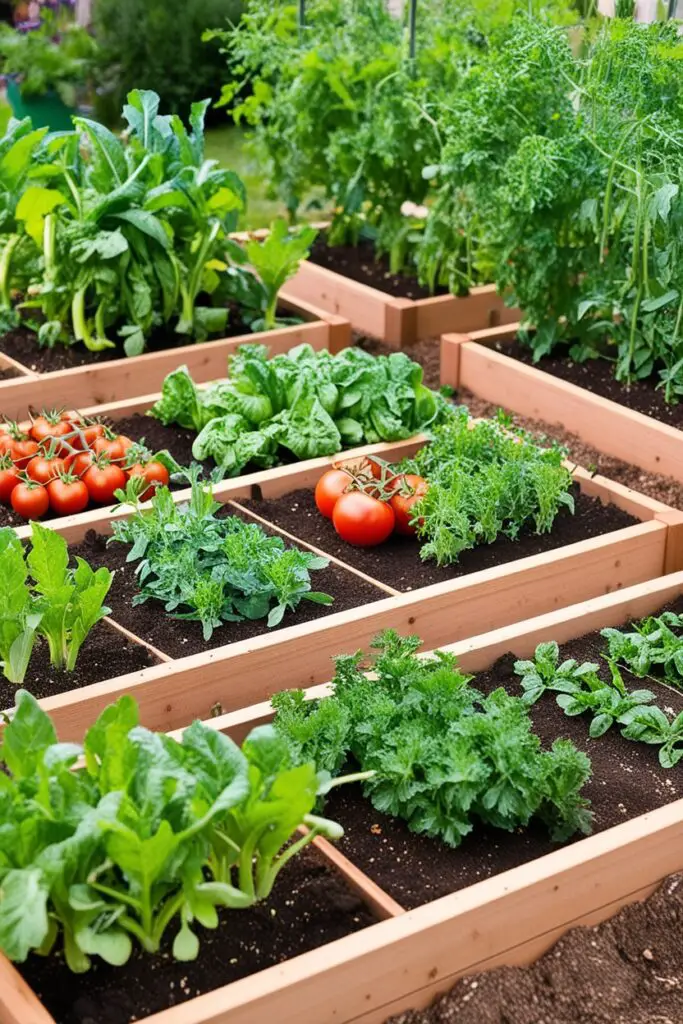
2. Vertical Vegetable Garden
Maximize space and grow more by using walls, trellises, or hanging planters for an upward-growing garden.
How to Make This:
- Choose climbing plants: Grow beans, cucumbers, peas, and tomatoes that thrive in vertical setups.
- Use trellises and stakes: Install wooden or metal trellises along walls or in garden beds for plant support.
- Hanging baskets and pocket planters: Grow herbs, lettuce, or strawberries in wall-mounted planters.
- Install vertical hydroponic towers: If space is tight, use a self-watering hydroponic system for a modern twist.
Picture This:
A cozy balcony or backyard wall transformed into a lush, green vegetable haven. Vines of cherry tomatoes dangle from trellises, while fresh herbs sprout from hanging planters at arm’s reach. The scent of basil and thyme fills the air, and your small space feels alive with vibrant, cascading greenery—a mini jungle of edible goodness.
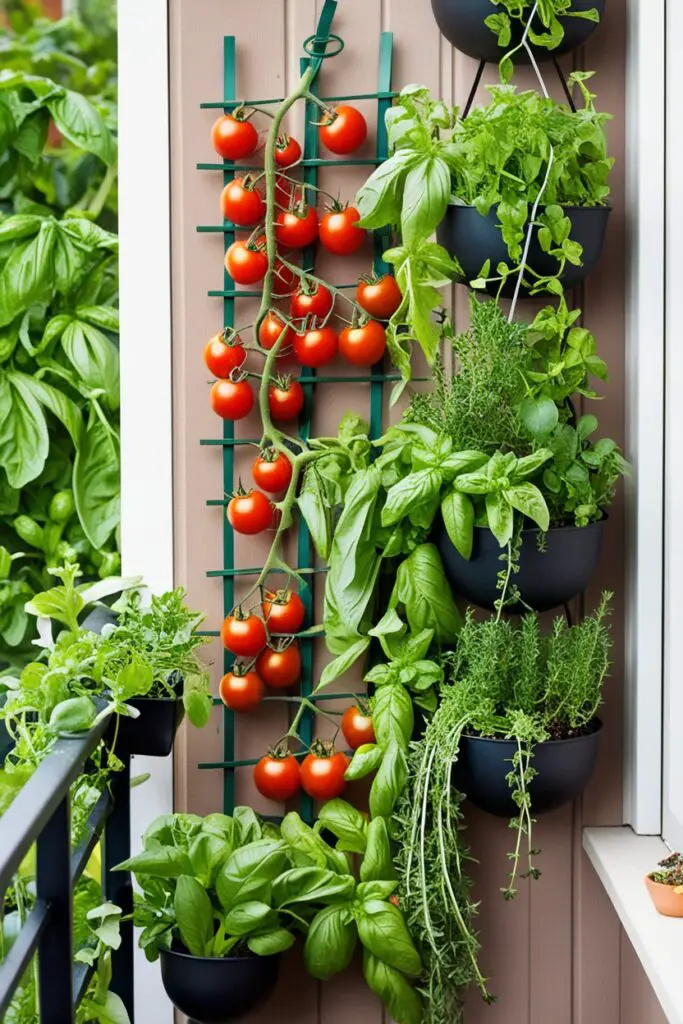
3. Container Vegetable Gardening
Perfect for those with limited space, container gardening allows flexibility and easy maintenance.
How to Make This:
- Choose the right containers: Use pots, grow bags, or recycled buckets with drainage holes.
- Pick compact vegetables: Grow dwarf tomatoes, radishes, peppers, and leafy greens that thrive in containers.
- Ensure proper soil and watering: Use lightweight, well-draining potting mix and water consistently.
- Rotate and reposition: Move your containers to maximize sunlight exposure throughout the day.
Picture This:
Your patio or balcony is lined with colorful pots overflowing with crisp lettuce, bright cherry tomatoes, and fragrant basil. You pick fresh herbs for your dinner straight from your doorstep, with no need for a large backyard. Everything is within reach, and your little container garden is thriving in its urban oasis.
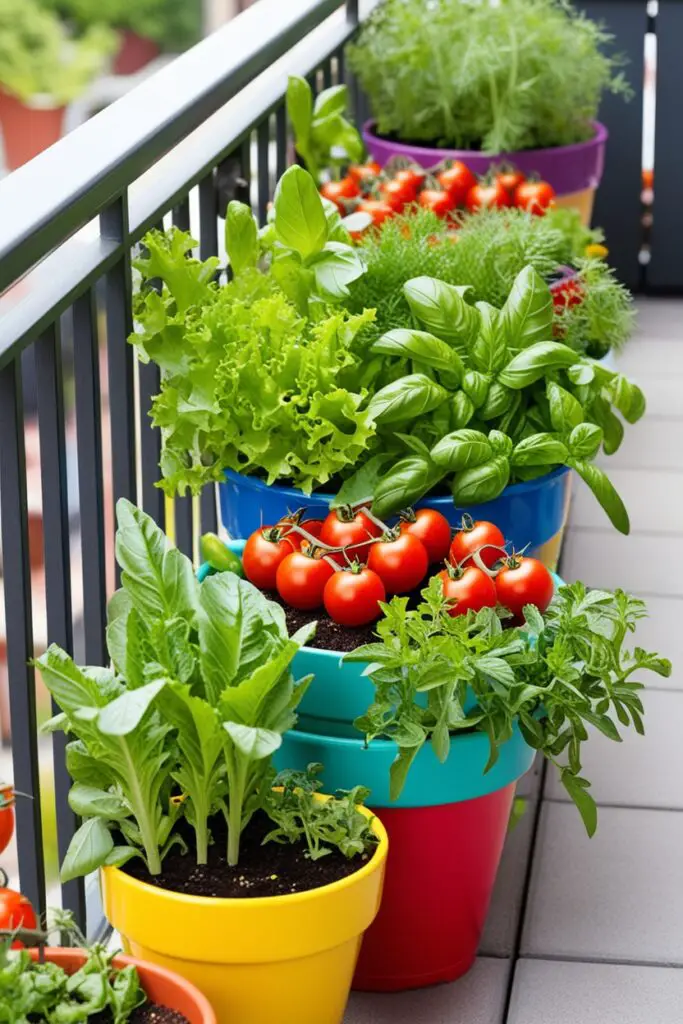
4. No-Dig Vegetable Garden
A low-maintenance and eco-friendly way to grow vegetables without disturbing the soil structure.
How to Make This:
- Layer organic materials: Start with cardboard, then layer compost, mulch, and soil.
- Plant directly into the top layer: Sow seeds or plant seedlings without tilling the ground.
- Water and maintain: Keep the soil moist and replenish mulch as needed.
- Let nature do the work: Beneficial microbes and worms improve soil fertility over time.
Picture This:
A lush, thriving vegetable garden without the backbreaking work of tilling. Rich, dark soil teeming with nutrients supports happy, robust plants. No weeds in sight, just healthy, flourishing vegetables growing effortlessly—nature’s way of gardening at its best.
5. Hydroponic Vegetable Garden
A futuristic, soil-free way to grow vegetables with water-based nutrient solutions.
How to Make This:
- Choose your system: Set up a deep-water culture, nutrient film technique, or vertical hydroponic garden.
- Use nutrient-rich water: Replace soil with a water-based solution filled with essential nutrients.
- Provide artificial lighting: If growing indoors, install LED grow lights for proper plant growth.
- Monitor pH and nutrient levels: Keep the water balanced for optimal vegetable production.
Picture This:
A sleek, modern indoor garden where lush green lettuce, crisp bell peppers, and fragrant basil grow effortlessly without soil. The gentle hum of the hydroponic system ensures that each plant gets the perfect nutrients, producing vibrant, healthy vegetables year-round—right in your kitchen or home greenhouse.
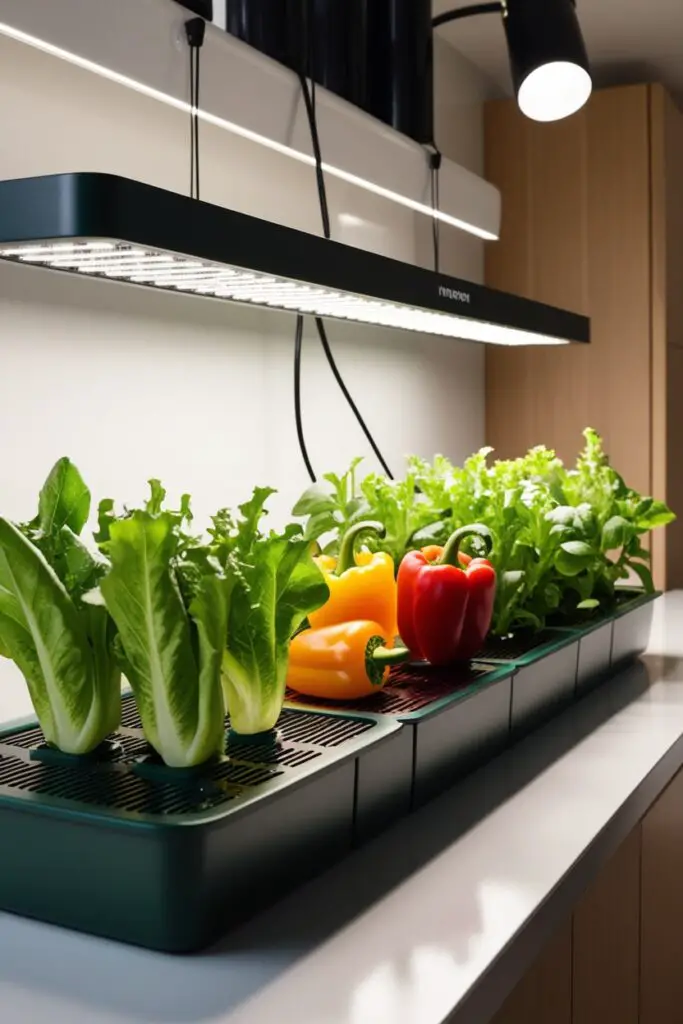
6. Companion Planting Garden
Companion planting is an effective way to maximize space and protect your plants naturally. By pairing compatible vegetables and herbs, you create a self-sustaining ecosystem that promotes growth and repels pests.
How to Make This:
- Select plants that naturally benefit each other (e.g., tomatoes and basil, carrots and onions).
- Use a layout that maximizes space while promoting plant health.
- Rotate companion plant pairings each season for continuous benefits.
- Incorporate flowers like marigolds to deter pests.
Picture This:
Your garden is a harmonious blend of colors, with marigolds dotting the edges, tomatoes thriving alongside fragrant basil, and leafy greens flourishing under the shade of taller crops. The scent of herbs fills the air, and the plants seem to grow stronger together.
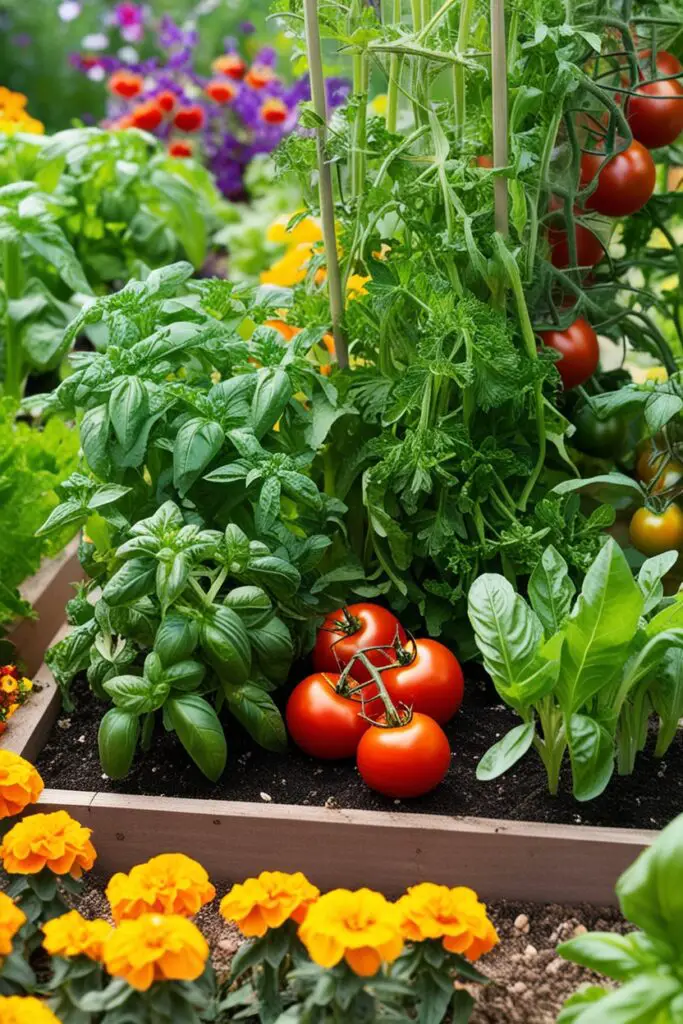
7. Herb and Vegetable Combo Garden
Mixing herbs and vegetables in the same space is both practical and visually appealing. Not only do herbs repel pests, but they also add a fragrant and decorative touch to your garden.
How to Make This:
- Mix herbs like thyme, oregano, and rosemary with vegetables for a diverse harvest.
- Use raised beds, containers, or dedicated herb sections within your garden.
- Plant aromatic herbs around vegetables to naturally repel pests.
- Harvest herbs regularly to encourage fresh growth.
Picture This:
A delightful mix of textures and fragrances fills your garden—soft feathery dill sways in the breeze while deep green basil bushes thrive next to leafy lettuce. The air carries a mix of earthy rosemary and fresh mint as you reach down to pick fresh ingredients for dinner.
8. No-Dig Vegetable Garden
No-dig gardening is an easy, sustainable method that keeps soil healthy and minimizes labor. Instead of tilling, you layer organic material, allowing nature to do the work for you.
How to Make This:
- Cover an area with cardboard to suppress weeds.
- Layer compost, straw, and soil on top to create rich planting beds.
- Plant directly into the layered bed for easy and quick gardening.
- Replenish organic layers each season to maintain soil health.
Picture This:
A lush, vibrant vegetable patch emerges without the back-breaking work of tilling. Earthworms thrive beneath the layers, enriching the soil, while your plants grow effortlessly with deep, healthy roots.
9. Hanging Basket Garden
Short on space? Hanging baskets allow you to grow fresh vegetables in mid-air! This is a great option for patios, balconies, and even indoor gardening.
How to Make This:
- Choose sturdy hanging baskets with good drainage.
- Select trailing vegetables like cherry tomatoes, strawberries, and herbs.
- Use high-quality potting mix to retain moisture.
- Water regularly to prevent soil from drying out.
Picture This:
Delicate vines of cherry tomatoes cascade from hanging baskets, turning red in the sun. The sweet scent of basil wafts through the air as your garden comes to life at eye level, making harvesting a breeze.
10. Balcony Vegetable Garden
Urban dwellers can still enjoy homegrown produce by transforming their balconies into functional vegetable gardens. With the right setup, even small spaces can yield big harvests.
How to Make This:
- Use vertical planters, railing pots, and stackable containers.
- Select compact vegetables like peppers, radishes, and spinach.
- Ensure at least six hours of sunlight daily.
- Utilize a drip irrigation system for efficient watering.
Picture This:
A lively urban balcony overflows with greenery—leafy spinach, vibrant bell peppers, and fresh radishes nestled in chic containers. The view is not only breathtaking but also provides fresh produce at your fingertips.
11. Keyhole Garden
A keyhole garden is a self-sustaining design that conserves water and maximizes nutrients. Its circular shape includes a composting center that nourishes surrounding plants.
How to Make This:
- Construct a raised, circular garden bed with a composting basket in the center.
- Layer soil, compost, and mulch for healthy plant growth.
- Use stones or bricks to build the structure.
- Water directly into the composting basket for continuous nutrient replenishment.
Picture This:
A visually striking garden bed spirals around a nutrient-rich compost center. Every plant flourishes as they naturally feed off decomposed organic matter, creating a sustainable, self-fertilizing oasis of vegetables.
12. Polytunnel Vegetable Garden
For those who want to extend their growing season, a polytunnel creates a protected microclimate. This method shields plants from harsh weather while maintaining ideal conditions year-round.
How to Make This:
- Set up a polytunnel with UV-resistant plastic to trap warmth.
- Plant temperature-sensitive vegetables like peppers, cucumbers, and eggplants.
- Ensure good ventilation to prevent overheating.
- Use raised beds or direct ground planting for maximum yield.
Picture This:
Stepping into your polytunnel, you’re surrounded by a warm, humid atmosphere where lush green plants reach upwards. Vines of cucumbers dangle from above, and the scent of ripe tomatoes fills the air—your private greenhouse is thriving.
13. Window Box Vegetable Garden
If you lack outdoor space, a window box garden is the perfect solution. With just a few feet of ledge space, you can grow fresh vegetables right outside your window.
How to Make This:
- Choose deep window boxes with drainage holes.
- Grow easy-to-maintain vegetables like lettuce, radishes, and herbs.
- Ensure your window gets at least five hours of sunlight.
- Water daily to keep the soil moist.
Picture This:
Your kitchen window frames a charming box bursting with bright green lettuce and sprigs of parsley. With just a quick reach, you can grab fresh herbs while cooking, effortlessly blending nature with convenience.
14. Hydroponic Vegetable Garden
Hydroponic gardening is a soil-free method that grows vegetables in nutrient-rich water. It’s perfect for those who want a high-tech, efficient way to grow food indoors.
How to Make This:
- Invest in a hydroponic system or DIY one using PVC pipes and nutrient solutions.
- Grow leafy greens, herbs, and tomatoes in a water-based system.
- Monitor pH levels and nutrient concentration.
- Place under LED grow lights if indoors.
Picture This:
A futuristic display of crisp lettuce and fragrant basil growing without soil, their roots suspended in nutrient-rich water. The vibrant greens contrast against sleek modern containers, proving that gardening can be both high-tech and sustainable.
15. Wild Edible Garden
A wild edible garden brings a natural, organic feel to your backyard. By growing native edible plants, you encourage biodiversity while enjoying fresh, foraged produce.
How to Make This:
- Plant a mix of native edible plants like wild onions, garlic, and edible flowers.
- Allow a naturalistic arrangement to create a biodiverse environment.
- Avoid pesticides to maintain an organic ecosystem.
- Add walking paths and seating areas for enjoyment.
Picture This:
A dreamy, whimsical fresh herbs and blooming flowers. Your garden is not just a source of food but a thriving, self-sustaining ecosystem where nature flourishes in harmony.
Conclusion
Creating a vegetable garden is not just about growing food—it’s about cultivating a lifestyle that connects you with nature, promotes sustainability, and enhances your well-being. Whether you have a sprawling backyard or a compact balcony, there are endless ways to bring fresh produce into your home. From no-dig gardening to hydroponic setups, each method offers unique benefits tailored to different spaces and needs.
By embracing innovative vegetable garden ideas like vertical gardening, companion planting, and polytunnel structures, you can maximize your garden’s potential while making it visually appealing. Not only does a vegetable garden provide nutritious, homegrown food, but it also creates a relaxing, green oasis right outside your door. So, pick an idea that suits your space, get your hands dirty, and start growing your own fresh vegetables today.

